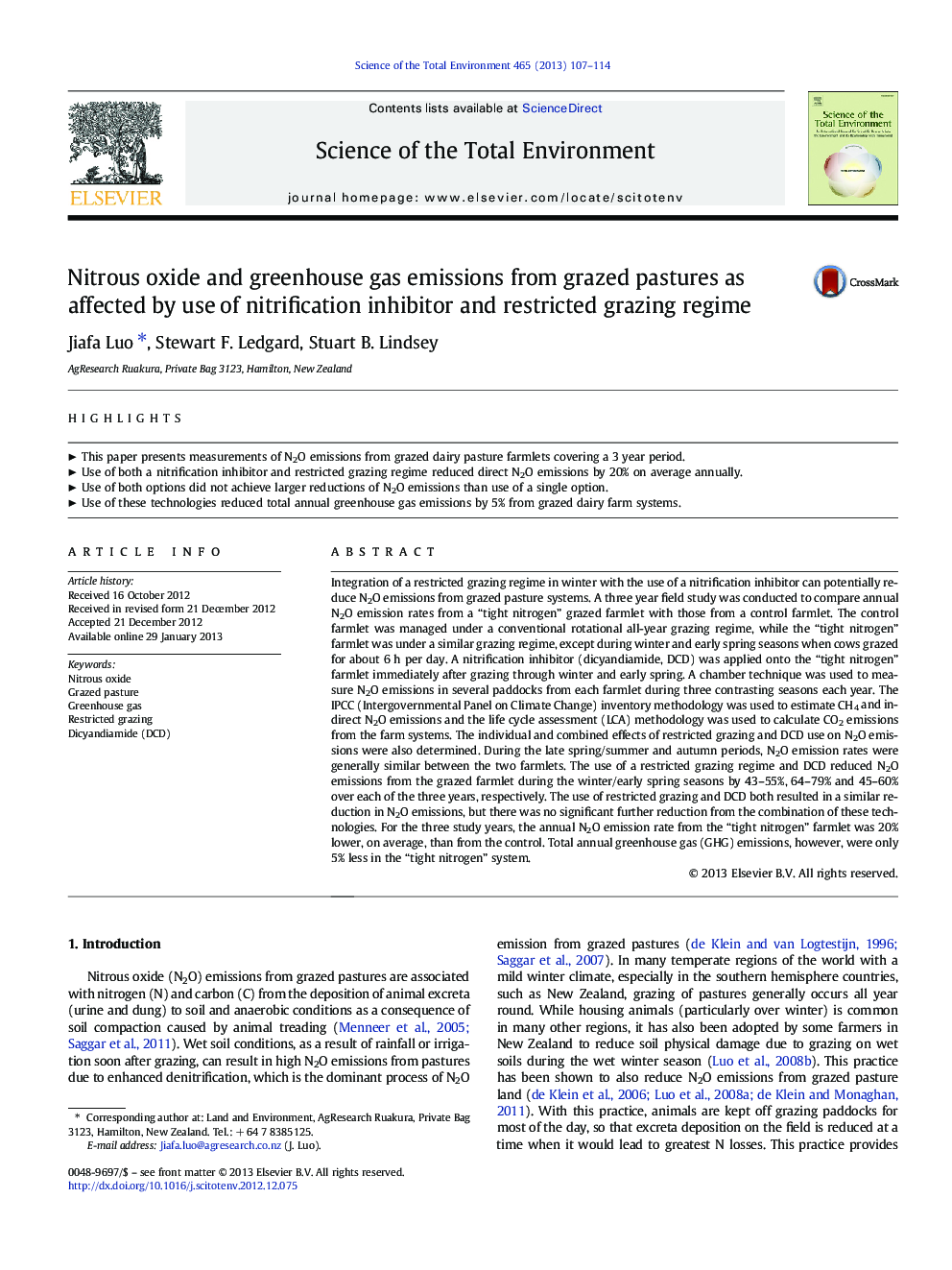| کد مقاله | کد نشریه | سال انتشار | مقاله انگلیسی | نسخه تمام متن |
|---|---|---|---|---|
| 4428684 | 1619797 | 2013 | 8 صفحه PDF | دانلود رایگان |

Integration of a restricted grazing regime in winter with the use of a nitrification inhibitor can potentially reduce N2O emissions from grazed pasture systems. A three year field study was conducted to compare annual N2O emission rates from a “tight nitrogen” grazed farmlet with those from a control farmlet. The control farmlet was managed under a conventional rotational all-year grazing regime, while the “tight nitrogen” farmlet was under a similar grazing regime, except during winter and early spring seasons when cows grazed for about 6 h per day. A nitrification inhibitor (dicyandiamide, DCD) was applied onto the “tight nitrogen” farmlet immediately after grazing through winter and early spring. A chamber technique was used to measure N2O emissions in several paddocks from each farmlet during three contrasting seasons each year. The IPCC (Intergovernmental Panel on Climate Change) inventory methodology was used to estimate CH4 and indirect N2O emissions and the life cycle assessment (LCA) methodology was used to calculate CO2 emissions from the farm systems. The individual and combined effects of restricted grazing and DCD use on N2O emissions were also determined. During the late spring/summer and autumn periods, N2O emission rates were generally similar between the two farmlets. The use of a restricted grazing regime and DCD reduced N2O emissions from the grazed farmlet during the winter/early spring seasons by 43–55%, 64–79% and 45–60% over each of the three years, respectively. The use of restricted grazing and DCD both resulted in a similar reduction in N2O emissions, but there was no significant further reduction from the combination of these technologies. For the three study years, the annual N2O emission rate from the “tight nitrogen” farmlet was 20% lower, on average, than from the control. Total annual greenhouse gas (GHG) emissions, however, were only 5% less in the “tight nitrogen” system.
► This paper presents measurements of N2O emissions from grazed dairy pasture farmlets covering a 3 year period.
► Use of both a nitrification inhibitor and restricted grazing regime reduced direct N2O emissions by 20% on average annually.
► Use of both options did not achieve larger reductions of N2O emissions than use of a single option.
► Use of these technologies reduced total annual greenhouse gas emissions by 5% from grazed dairy farm systems.
Journal: Science of The Total Environment - Volume 465, 1 November 2013, Pages 107–114